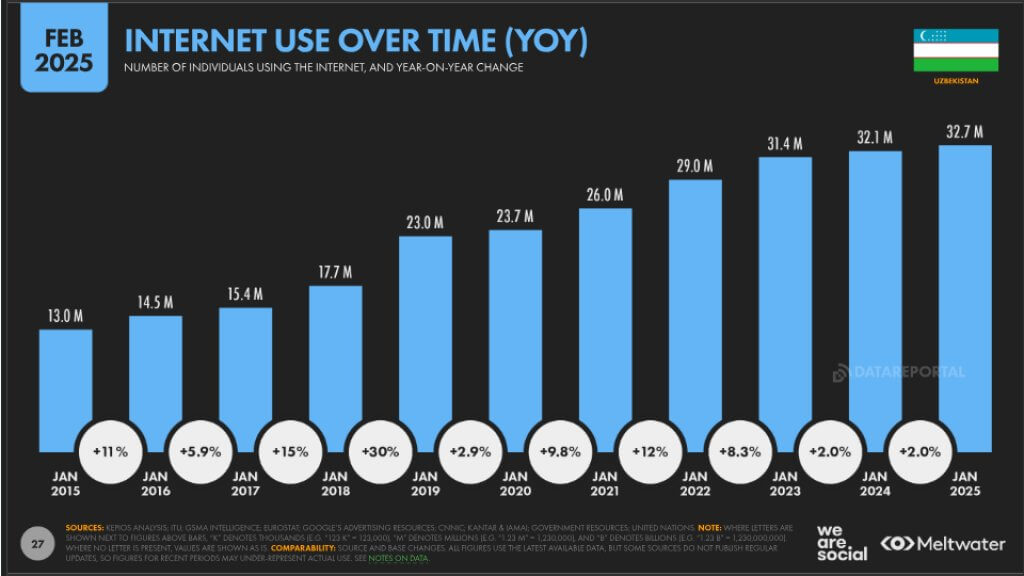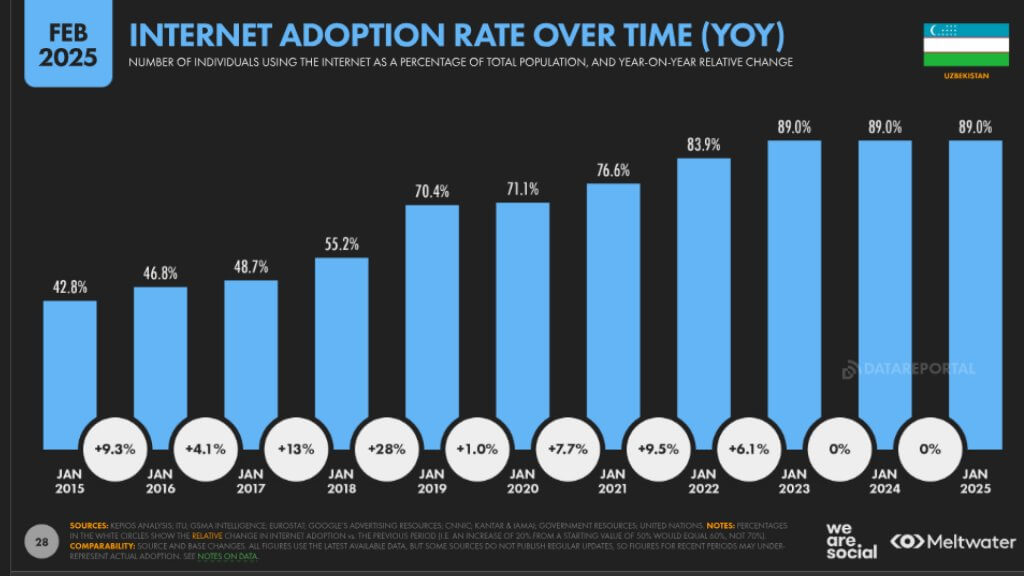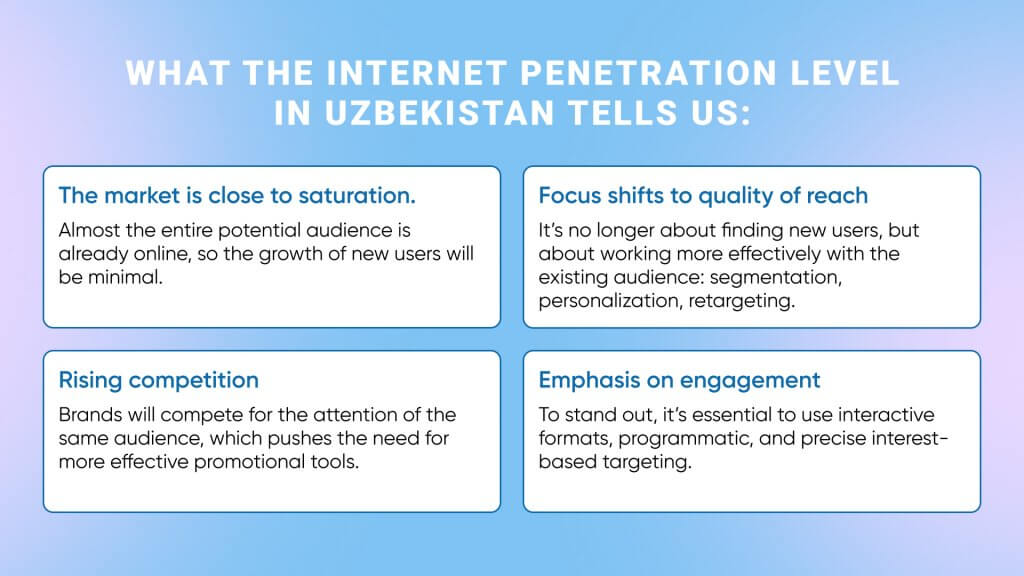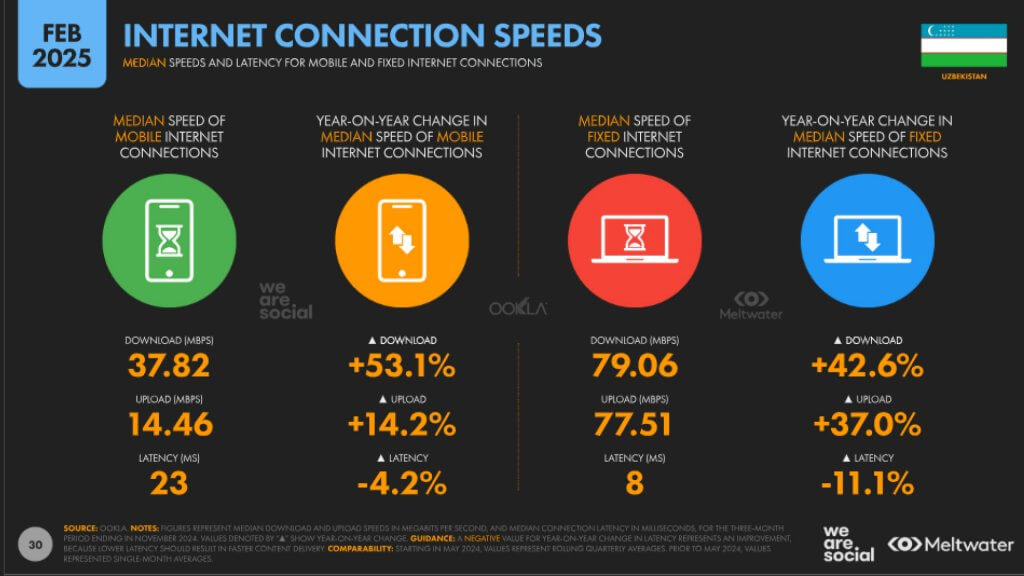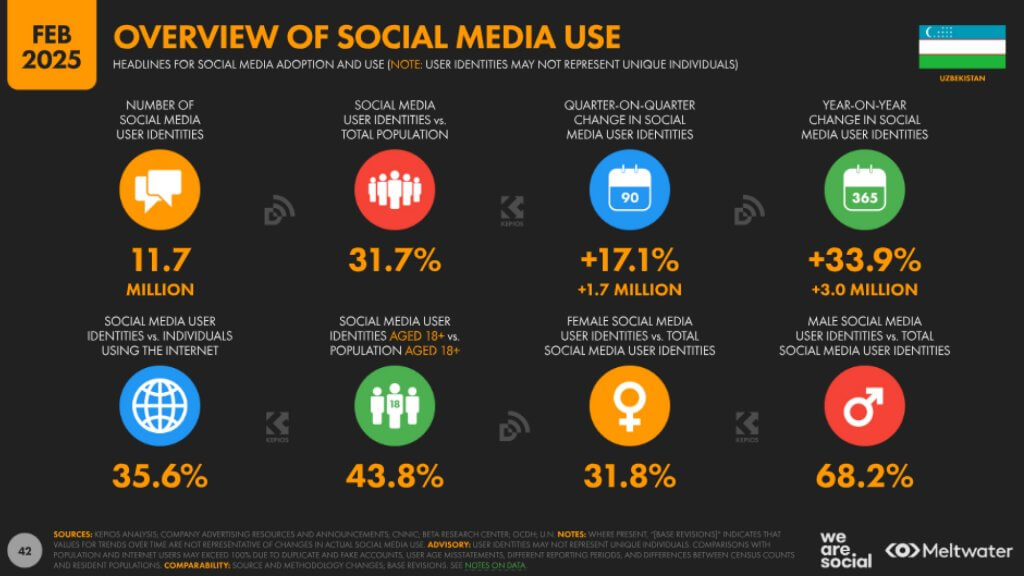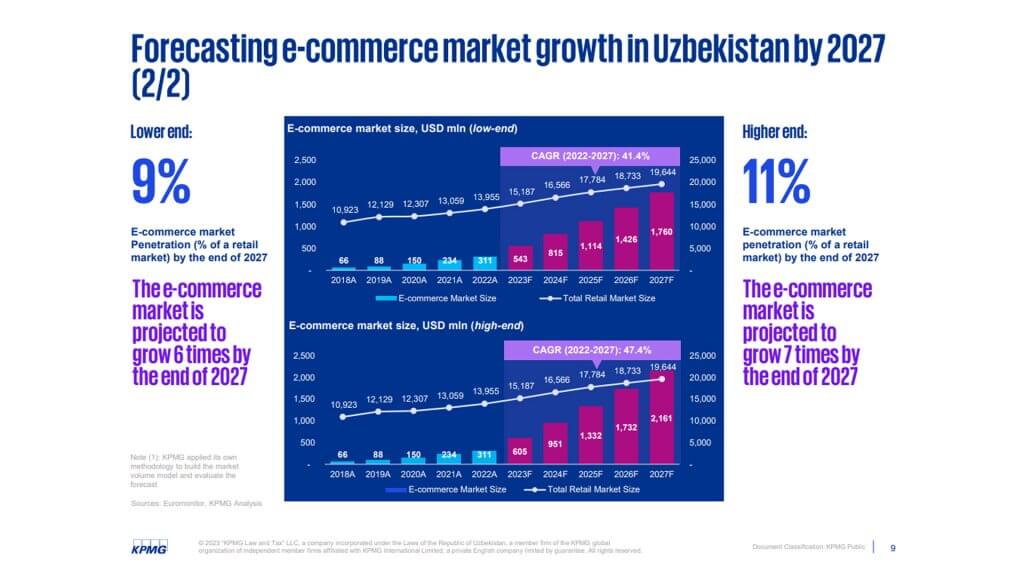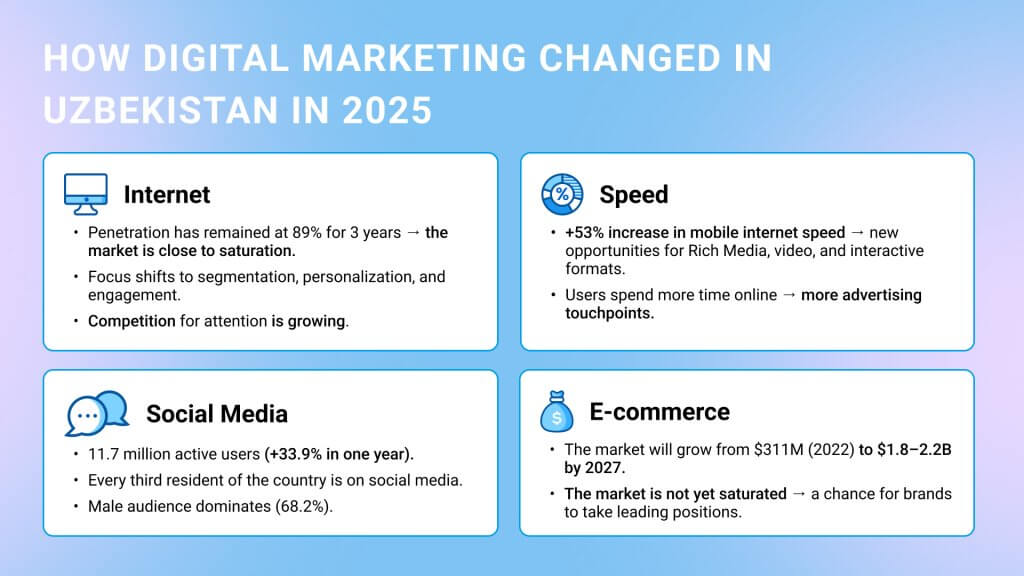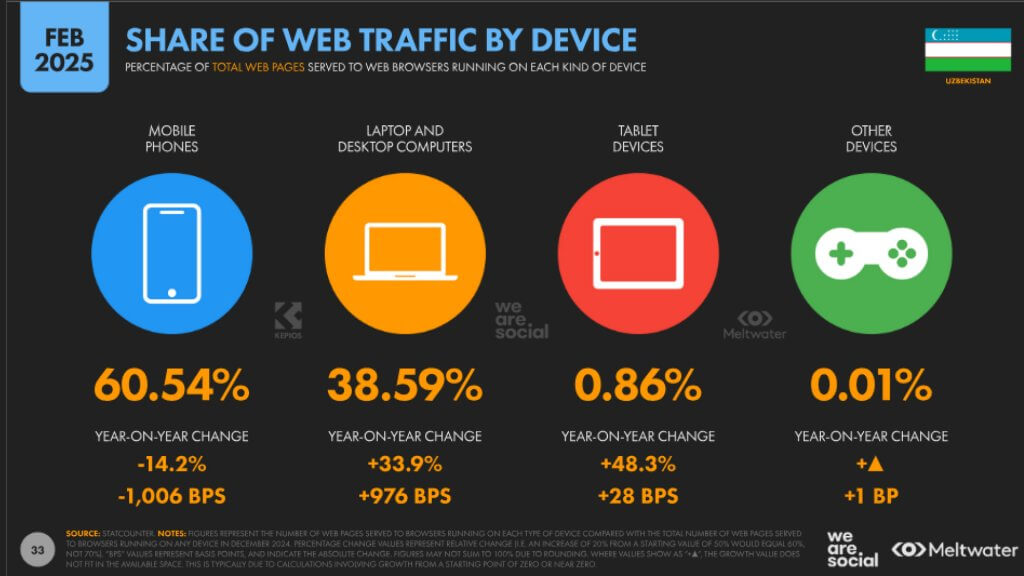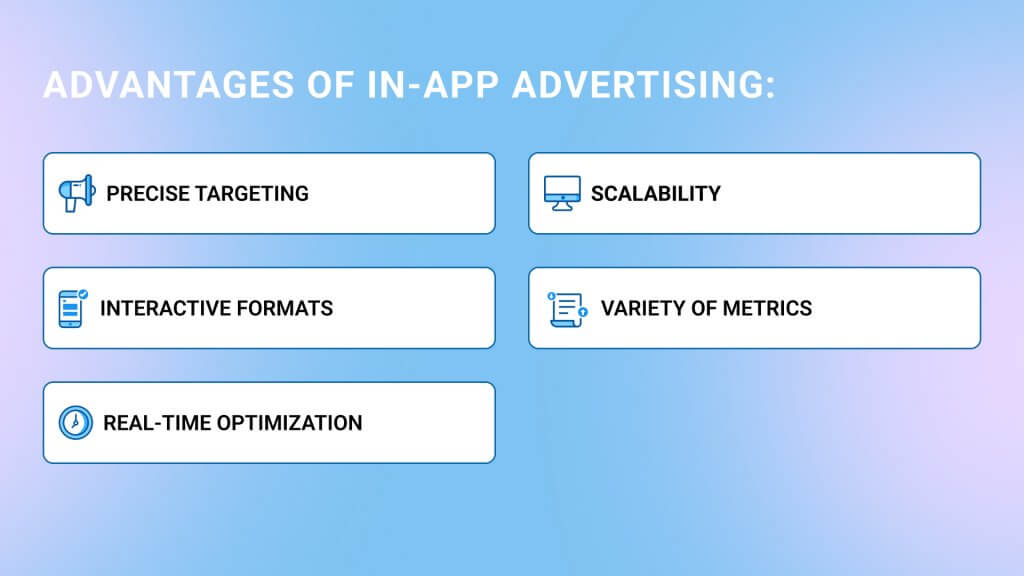Digital Marketing in Uzbekistan: 2025 Trends and Insights
Digital marketing in Uzbekistan is changing significantly in 2025. Uzbekistan is considered one of the most dynamically developing countries in Central Asia in terms of digital technology integration. The rapid growth of the online audience and active investments in digital channels make the market particularly attractive for brands and advertisers.
According to DataReportal, at the beginning of 2025, the country already had 32.7 million internet users. According to the National Statistics Committee, the internet penetration rate reached 94.2% from January to August. Under these conditions, digital marketing in Uzbekistan becomes a key driver of promotion: from mobile advertising and programmatic to social media.
In this article, we review the latest statistics from DataReportal and the main market trends according to experts.
How digital marketing in Uzbekistan changed in 2025
The internet penetration rate has remained unchanged for almost three years
Kepios analysis shows that the number of internet users in Uzbekistan increased by 626 thousand from 2024 to 2025. However, it is important to note that the percentage of the total population using the internet has remained unchanged since 2023 – 89%.
The statistics only changed by August 2025. The internet penetration rate reached 94.2%.
This indicates that the market is already approaching saturation. Most people who have the ability to use the internet are already connected. This inevitably affects digital marketing in Uzbekistan.
Further growth in penetration will occur more slowly and will require either new access technologies or coverage of remote and underserved populations.
Based on this, advertisers should invest in deeper audience engagement. This is the foundation of modern digital marketing in Uzbekistan.
Although the growth of internet penetration has slowed down, it is now comparable to neighboring countries like Kazakhstan and Russia — reaching 91% at the beginning of 2025. Given that Uztelecom has reduced the cost per 1 Mbps by 5–6 times over the past five years, this impressive progress is expected to continue driving not only higher penetration but, more importantly, increased usage frequency and traffic volume.
To attract the audience to a product, brands need to look for new, more effective promotion tools. One of them is programmatic advertising — an automated way to purchase online ad space with precise targeting and creative banners. Read more here.
+53% internet speed: statistics vs reality
Over the past year, the average mobile internet speed in Uzbekistan increased by 13.12 Mbps (+53.1%).
Such significant growth directly affects digital marketing in Uzbekistan:
- Expanded advertising opportunities: Audiences now more easily consume heavy formats — video, Rich Media, interactive. Brands can use high-engagement creatives more boldly.
- Strengthening mobile-first audience: The faster the internet, the more time users spend in apps and social media, expanding in-app advertising opportunities.
- Higher competition for attention: Better connection quality raises audience expectations for creatives and user experience. Brands need to improve content quality.
- E-commerce potential growth: Convenient and fast mobile transactions become habitual, increasing demand for digital platforms and online commerce.
For advertisers, this means moving from a “basic digital presence” to more advanced strategies — focusing on video, mobile apps, personalization, and engaging formats.However, internet speed in the capital and regions differs significantly, affecting campaign results and overall digital marketing in Uzbekistan.
Internet penetration reached 94,2% in 2025, but what about quality? We are still 74th out of 103 countries in the global mobile internet speed ranking, according to Speedtest. Outside major cities and main roads, connectivity leaves much to be desired. Data from ad platforms confirms this: we see major traffic spikes in Tashkent far exceeding the population of the region, and relatively low traffic in rural areas.
Features of the digital audience in Uzbekistan
According to DataReportal, the population of Uzbekistan in January 2025 was 36.7 million:
- 50.7% live in cities
- 49.3% in rural areas
Gender distribution: 49.6% women, 50.4% men. Average age: 27 years.
In 2025, the digital audience in Uzbekistan has some distinct characteristics. First, the core of users is young people under 35, making the market dynamic and responsive to new formats. Second, the local language dominates: Uzbek is the primary language for the overwhelming majority (80–85%), so brands must adapt creatives, communication, and services to the local language.
There is noticeable growth in local content. Advertisers increasingly use materials in Uzbek with cultural and social codes closer to their main audience.
Today, we see not just growth in the number of internet users but also in the quality of their behavior. People spend more time online, consume content, and actively use online services. High-quality users combined with high penetration create a window of opportunity, which must be recognized and leveraged correctly.
Telegram dominates among messengers in Uzbekistan, with an active user base of around 25 million people per month. The reach capacity of some mobile advertising DSPs reaches 20–22 million users. Omnichannel strategies are no longer just a buzzword — the vast majority of advertisers are either using or exploring a brandformance approach, where it’s essential to both warm up broad audiences and drive leads, sales, and/or customer LTV. As a result, there is growing demand for end-to-end solutions in the digital marketing ecosystem.
One in three residents of Uzbekistan is active on social media
At the beginning of 2025, Uzbekistan had 11.7 million active social media users — 31.7% of the total population, including 31.8% women and 68.2% men.
Social media shows explosive audience growth (+33.9% year-on-year):
- Almost a third of the population actively uses social media.
- Male audience predominates significantly.
- Growth of +3 million users over the year shows social media remains a driver of digital promotion and will intensify brand competition for audience attention.
E-commerce in Uzbekistan: growth to $2.2 billion by 2027
The e-commerce sector is developing rapidly. Online trade penetration still lags behind neighboring Kazakhstan, but the digital economy is ready for innovation.
Recent KPMG analysis predicts average annual e-commerce growth in Uzbekistan between 2023–2027 of 41.4%–47.4%.
The dynamics in e-commerce are especially noticeable: alongside international players, local marketplaces (Uzum Market, GoBozor, etc.) are growing rapidly and have become habitual shopping channels. Their popularity forces brands to restructure strategies, investing more in promotion on these platforms.
In 2022, Uzbekistan’s e-commerce market was valued at $311 million. By the end of 2027, it is expected to reach $1.8–2.2 billion. Rapid growth will boost demand for digital advertising, especially in-app.
However, there is a noticeable lag compared to Kazakhstan, where total sales in 2024 reached $6.5 billion. This shows Uzbekistan’s market is still unsaturated, giving brands a chance to gain leading positions and build audience loyalty ahead of competitors.
Rapid e-commerce growth (over 40% annually per KPMG) has changed the media split: companies allocate an increasing share of ad budgets to digital, especially video and mobile formats, while traditional channels are increasingly used mainly for branding purposes.
Digital marketing in Uzbekistan: programmatic advertising
61% of internet users access the web via mobile devices — smartphones and tablets, while only 39% use computers and laptops.
85.51% of traffic comes from Android, 14.32% from iOS.
Statistics show mobile is the main communication channel. Most users prefer smartphones and tablets, making mobile the focus of advertising campaigns. Accordingly, in-app promotion has become one of the main channels defining digital marketing in Uzbekistan.
The market is mobile by nature. A significant part of traffic comes from smartphones, forming a mobile-first approach. Adapting to mobile formats is critical. However, there is a shortage of digital talent, especially in analytics, performance, and strategic marketing, which slows market development and creates high demand for skilled professionals.
Advantages of in-app advertising
- High targeting precision: Ads are shown to users with specific interests and locations.
- Engaging formats: Interactive solutions like Rich Media increase audience interest and campaign effectiveness.
- Flexible optimization: Ability to track performance and adjust in real time.
- Wide reach: In-app ads allow interaction with millions of users.
- Deep analytics: A wide range of metrics enables detailed evaluation and fine-tuning.
Expert opinions on trends in digital marketing in Uzbekistan
In 2025, digital marketing in Uzbekistan is changing. Internet penetration stabilized at 94,2%, indicating market saturation and intensifying competition for audience attention. At the same time, mobile internet speed increased by more than 50% and social media users exploded (+33.9% year-on-year), opening new opportunities for brands. The focus now shifts to a mobile-first strategy, personalization, and programmatic technologies, which allow precise targeting and high engagement.
First, the market is moving toward a performance and transparency approach: brands increasingly demand clear CPA, conversions, tracker performance, and verification. Second, the role of bloggers and native content has grown: companies use micro- and nano-influencers as opinion leaders to build audience trust.
Third, Telegram has become a locally popular platform, with over 25 million users in Uzbekistan. Telegram Ads allows targeting by interest and region at a scale comparable to global platforms. Brands are also increasingly building cross-channel campaigns integrating social media, OLV, search, e-commerce sites, and offline channels for maximum impact.
Digital in Uzbekistan is no longer secondary; it has become one of the main communication channels between brands and audiences, actively catching up with TV. Rapid audience growth and cautious digital-first adoption mean digital has not fully overtaken TV yet. In some channels, even deflation is observed. One of the main changes in digital communication in 2025 is the accessibility of premium Telegram formats for most clients. The messenger significantly lowered the entry threshold and minimum bids, expanded targeting options, and added new formats. Given that almost everyone in Uzbekistan uses Telegram, this has opened up access to an audience that is either not present on social media or does not browse websites.
LinkedIn has become a new million-user social network in the country, with 90% of users aged 18–34. The liberalization of Telegram Ads lowered CPM entry barriers from 2 euros to zero, allowing the market to decide itself. A large portion of budgets relocated to this national messenger, reaching about 25 million users. The market is gradually digitalizing, marketplace share is growing, and internet quality is improving. WTO accession positively impacts the anti-monopolization of international internet traffic. This is just the beginning.
One of the most positive trends is the growth of local expertise. The number of specialists capable of managing complex digital campaigns with analytics, hypotheses, and real results has grown rapidly. As a result, there is a careful transition from experimentation to a systematic approach. Businesses start seeing digital as a full growth channel, not a secondary area. While expectations are still not fully met, I am confident that upcoming case studies will drive the next stage of industry development.
TikTok is blocked in Uzbekistan, and YouTube still does not have monetization, which has led to an ongoing shortage of in-stream video inventory. The main tools shaping budgets remain GDN, programmatic, and social media, as well as Telegram Ads. In 2025, the budget threshold was removed and new ad formats were launched, including video, though with their own limitations.
Alongside traditional media, there is also significant growth in online retail media (Uzum Market, Yandex.Go), e-grocery (Yandex.Lavka, Korzinka Go), and online pharmacies (apteka.uz, pharmaclick.uz, and others). Over the past five years, influencer marketing budgets have also grown considerably. Search traffic is split 80/20 between Google and Yandex, with a similar breakdown in budgets. Among local inventory, classifieds have shown notable growth — OLX has multiplied its user base over the past few years and has become a reliable supplier of ad inventory and traffic. Local media outlets are stagnating in terms of audience and are increasingly less frequently included in media mixes.
Digital marketing in Uzbekistan is changing under global trends and local characteristics. Brands increasingly use personalized offers and combine traditional media advantages, like TV, with digital channels.
One of the main tools for attracting and retaining customers is in-app advertising. In 2024, the mobile advertising market was valued at $150–160 million, with a forecast growth to $190–210 million by the end of 2025.
To learn more about mobile advertising or to launch an in-app campaign:
- Submit a request on our website
- Email us at hello@byyd.me
